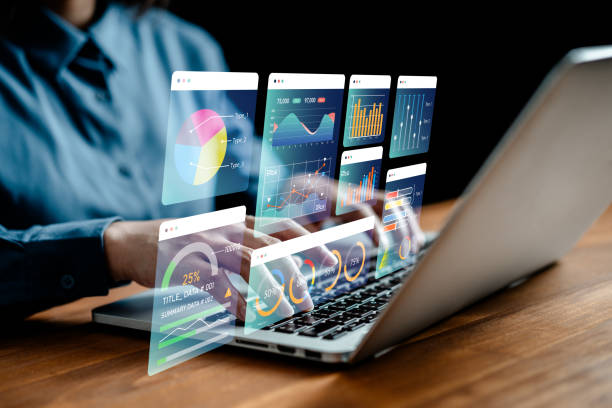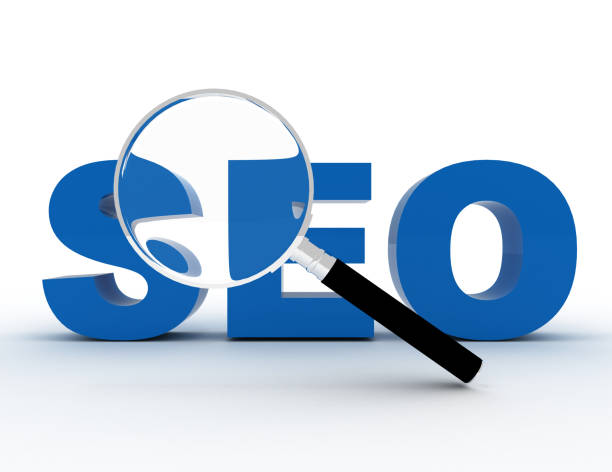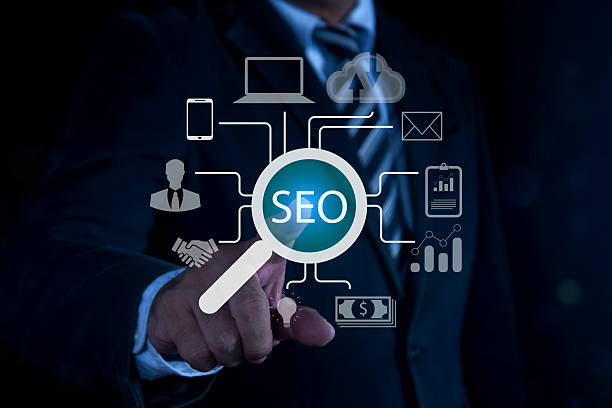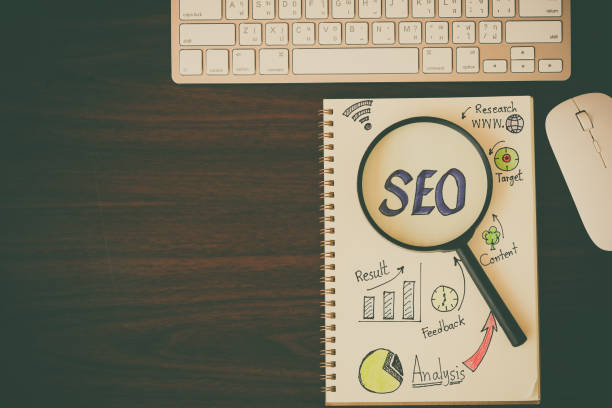What is On-Page SEO and Why Does It Matter?

On-Page SEO, also known as On-Page SEO, refers to the set of actions you take within your website to improve your site’s ranking in Google search results improve.
These actions include content optimization, site structure, HTML tags, and page loading speed.
Unlike Off-Page SEO, which focuses on activities outside of the website, On-Page SEO is completely under your control and can have a significant impact on the visibility of your website.
The importance of On-Page SEO stems from the fact that Google seeks to provide the best and most relevant results to its users.
By optimizing your website according to On-Page SEO standards, you help Google understand your content better, resulting in a better ranking in search results.
A website with strong On-Page SEO not only performs better in search results but also provides a better user experience, leading to increased visits, engagement, and conversions.
In today’s competitive world, ignoring On-Page SEO can mean losing valuable opportunities to attract customers and grow your business.
Therefore, investing in On-Page SEO is a necessity for any website looking for success in the online space.
Do you dream of a thriving online store but don’t know where to start?
Rasaweb is your comprehensive e-commerce website design solution.
✅ Attractive and user-friendly design
✅ Increased sales and revenue⚡ Get a free consultation
Keyword Research – The Foundation of On-Page SEO

Keyword research is the process of identifying the words that users use to search for information on Google.
These keywords form the basis of your On-Page SEO strategy and help you optimize your content to attract your target audience.
Various tools like Google Keyword Planner, Ahrefs, and SEMrush are available for keyword research and can help you find relevant keywords, search volume, and competition level.
Choosing the right keywords requires a thorough understanding of your target audience and their needs.
You should look for words that not only have a high search volume but are also relevant to your website content.
Using long-tail keywords, which are longer and more specific phrases, can help you attract a more targeted audience.
Once you’ve identified your keywords, you need to use them strategically in your content.
This includes using keywords in the page title, meta description, headings, and main text.
However, you should avoid keyword stuffing, as this can negatively impact your site’s ranking.
The main goal should be to create high-quality, valuable content for users that naturally incorporates the keywords.
Content Optimization – The Heartbeat of On-Page SEO

Content is king! This phrase is often heard in the world of On-Page SEO, and it’s really true.
High-quality content is the main factor in attracting and retaining users on your website and plays an important role in your site’s ranking in search results.
To optimize your content, you need to pay attention to a few key points:
1.
Creating Valuable and Unique Content:
Your content should provide users with useful information and answer their questions.
Try to present your content in a way that differentiates it from other websites and creates added value for users.
2.
Using Keywords Naturally:
Use keywords strategically in your page title, meta description, headings, and main text.
However, avoid keyword stuffing and try to write your content in a way that is readable and engaging for users.
3.
Proper Content Structuring:
Structure your content well using headings, subheadings, paragraphs, and lists.
This helps users easily scan your content and find the information they need.
Also, using images, videos, and infographics can make your content more engaging and interactive.
4.
Optimizing Content Length:
The length of your content should be appropriate for your topic and purpose.
In general, longer content (over 1000 words) has a better chance of ranking in search results, but more important than content length is its quality and value to users.
| Title | Description |
|---|---|
| Page Title | The page title should be attractive, concise, and include the main keyword. |
| Meta Description | The meta description should be a summary of the page content and encourage users to click. |
5.
Updating Content:
Regularly update your content to keep the information accurate and relevant.
This shows Google that your website is active and dynamic, and you are likely to get a better ranking in search results.
Optimizing HTML Tags – Guidance for Google Bots

HTML tags are important elements in On-Page SEO that help Google bots better understand the content of your page.
The most important HTML tags to optimize are:
1.
Title Tag:
The title tag displays your page title in search results.
This tag should be attractive, concise, and include the main keyword.
The length of the title tag should not exceed 60 characters.
2.
Meta Description Tag:
The meta description tag displays a summary of your page content in search results.
This tag should encourage users to click and provide accurate information about the page content.
The length of the meta description tag should not exceed 160 characters.
3.
Heading Tags:
Heading tags (H1, H2, H3, etc.) are used to structure content and highlight key points.
The H1 tag should be used for the main title of the page and should include the main keyword.
Use H2 to H6 tags for subheadings and try to use relevant keywords in them.
4.
Image Alt Tag:
The image tag (Alt Tag) is used to describe images.
This tag helps Google understand the content of your images and get a better ranking in image search results.
Try to fill the image tag with relevant keywords and an accurate description of the image.
Optimizing HTML tags is an important step in On-Page SEO that can help you improve your site’s ranking in search results.
By paying attention to these tags, you can help Google better understand your content and, as a result, attract more traffic to your website.
Does your current website create the trust that potential customers should have in your business? If not, it’s time to have a professional and impactful corporate website with Rasaweb.
✅ Completely custom design tailored to your brand identity
✅ Increased lead generation and credibility of your business in the eyes of customers⚡ Contact us for a free consultation!
Optimizing URLs – Friendly Addresses for Users and Google

A URL, or Uniform Resource Locator, is the address of a web page on the Internet.
URL optimization is an important aspect of On-Page SEO that can have a positive impact on your site’s ranking in search results.
An optimized URL should be short, readable, and include the main keyword.
1.
Using Keywords:
Fill your URL with the main keyword of the page.
This helps Google better understand the topic of your page.
However, avoid overusing keywords and try to keep your URL as short and readable as possible.
2.
Using Hyphens (-) Instead of Underscores (_):
Google considers hyphens (-) as word separators in URLs, while it ignores underscores (_).
Therefore, use hyphens (-) to separate words in your URL.
3.
Being Short and Readable:
Keep your URL as short and readable as possible.
Long and complex URLs are more difficult for users and Google to understand.
Try to design your URL in a way that users can guess what the page content is about just by looking at it.
4.
Using Lowercase Letters:
In general, it is recommended to use lowercase letters in your URL.
Some servers are case-sensitive in URLs and may cause problems.
5.
Avoiding the Use of Special Characters:
Avoid using special characters such as &, %, $, etc. in your URL.
These characters can cause problems in displaying the URL and also in understanding it by Google.
By optimizing your URLs, you can help Google better understand the content of your pages and, as a result, improve your site’s ranking in search results.
An optimized URL is not only useful for Google but also provides a better user experience.
Page Load Speed – Better User Experience, Higher Ranking

Page load speed is an important factor in On-Page SEO that directly affects user experience and your site’s ranking in search results.
Users expect a web page to load in a few seconds, and if a page takes too long to load, they will likely leave it.
Google also places a lot of importance on page load speed, and websites that have a higher speed get a better ranking in search results.
1.
Optimizing Images:
High-volume images can significantly reduce page load speed.
Before uploading images to your website, optimize them.
Use appropriate formats such as JPEG or PNG and reduce the size of images as much as possible without losing their quality.
2.
Compressing CSS and JavaScript Files:
CSS and JavaScript files can also affect page load speed.
By compressing these files, you can reduce their size and improve page load speed.
3.
Using CDN:
A CDN, or Content Delivery Network, is a network of servers that stores your website content around the world.
By using a CDN, users can receive your website content from the nearest server, which increases page load speed.
4.
Using Cache:
By using cache, you can store a static version of your website pages and display this static version to users on subsequent visits.
This makes your website pages load faster.
5.
Choosing a Suitable Hosting:
Choosing a suitable hosting can also have a big impact on page load speed.
Choose your hosting carefully and make sure it uses the right hardware and software.
By optimizing page load speed, you can provide a better user experience for your users and, as a result, improve your site’s ranking in search results.
Remember that page load speed is an important factor in On-Page SEO that should not be ignored.
Internal Linking – Creating a Strong Website Structure

Internal linking means creating links between different pages of your website.
This helps Google better understand the structure of your website and identify more important pages.
Also, internal linking can help users easily navigate your website and find the information they need.
1.
Creating a Hierarchical Structure:
Structure your website hierarchically.
Place more important pages at higher levels and less important pages at lower levels.
Use internal linking to create connections between these pages.
2.
Using Appropriate Anchor Text:
Anchor text is the text used to create a link.
Try to use anchor text that is appropriate and relevant to the content of the destination page.
Avoid using generic anchor text such as “click here”.
3.
Linking to Related Pages:
On each page, link to other related pages of your website.
This helps users find more information about their topic and also helps Google understand the connection between different pages of your website.
4.
Using Follow Links:
In general, it is recommended to use Follow links in internal linking.
NoFollow links tell Google not to transfer the authority of the source page to the destination page.
5.
Avoiding Over-Linking:
Avoid over-linking on a page.
Over-linking can affect the user experience and may also be considered a negative SEO technique by Google.
| Link Title | Description |
|---|---|
| Contact Us Pages | Link to pages with contact information |
| Product and Service Pages | Link to pages with product information |
| Related Articles | Link to articles with similar content |
With proper internal linking, you can improve the structure of your website, provide a better user experience for your users, and, as a result, improve your site’s ranking in search results.
On-Page SEO helps you to be seen better in Google results.
Mobile Optimization – Compatibility with the World of Mobile Phones

Today, more than half of website traffic comes from mobile devices.
Therefore, optimizing your website for mobile is a necessity in On-Page SEO.
Google gives more importance to websites that are optimized for mobile and ranks them higher in search results.
1.
Responsive Design:
Use responsive design for your website.
Responsive design allows your website to automatically adapt to the screen size of different devices.
This makes it easy for users to navigate your website and view its content.
2.
Page Load Speed:
Page load speed is more important on mobile.
Mobile users typically use the internet at a slower speed and have less tolerance for loading web pages.
Therefore, optimize the page load speed of your website on mobile.
3.
Using Readable Fonts:
Use readable and suitable fonts for mobile.
Small and unreadable fonts can affect the user experience.
4.
Using Large Buttons:
Use large, touchable buttons for mobile.
Small and untouchable buttons can be problematic for mobile users.
5.
Testing the Website on Different Devices:
Test your website on different devices to make sure it displays correctly and functions properly.
Use tools like Google Mobile-Friendly Test to check your website’s compatibility with mobile.
By optimizing your website for mobile, you can provide a better user experience for your users and, as a result, improve your site’s ranking in search results.
On-Page SEO helps you to have a modern and attractive website.
Is your current e-commerce site design causing you to lose customers and sales?
Rasaweb is your solution with modern and user-friendly e-commerce website design!
✅ Significant increase in conversion rate and sales
✅ Creating strong branding and building customer trust
⚡ Get a free e-commerce website design consultation from Rasaweb!
Website Security – Protecting User Information

Website security is an important factor in On-Page SEO that Google takes seriously.
Google gives a better ranking in search results to websites that use the HTTPS protocol.
Also, Google considers websites that have an SSL certificate to be more secure and warns users to stay away from insecure websites.
1.
Using HTTPS Protocol:
Use the HTTPS protocol for your website.
The HTTPS protocol encrypts information between your website and users and prevents hackers from accessing this information.
2.
Using SSL Certificate:
Use an SSL certificate for your website.
The SSL certificate confirms the identity of your website and assures users that your website is secure.
3.
Software Updates:
Regularly update your website software.
Updating software can fix security vulnerabilities and prevent your website from being hacked.
4.
Using Strong Passwords:
Use strong passwords for your user accounts.
Strong passwords should include uppercase and lowercase letters, numbers, and symbols.
5.
Regular Backups:
Back up your website regularly.
Regular backups help you to quickly restore your website if any security issues occur.
By securing your website, you can gain the trust of users and, as a result, improve your site’s ranking in search results.
Measuring and Analyzing Results – Continuous Improvement of On-Page SEO

On-Page SEO is an ongoing process and requires regular measurement and analysis of results.
By measuring and analyzing the results, you can identify the strengths and weaknesses of your On-Page SEO strategy and take the necessary steps to improve it.
1.
Using Google Analytics:
Use Google Analytics to measure your website traffic.
Google Analytics provides detailed information about your website visitors, traffic sources, visited pages, and user behavior on your website.
2.
Using Google Search Console:
Use Google Search Console to check your website’s performance in Google search results.
Google Search Console provides information about the keywords that users use to find your website, your website’s ranking in search results, website errors, and inbound links to your website.
3.
Data Analysis:
Regularly analyze the data collected from Google Analytics and Google Search Console.
Look for patterns and trends that can help you improve your On-Page SEO strategy.
4.
Creating a Report:
Create a regular report of your On-Page SEO results.
This report should include information about website traffic, website ranking in search results, top keywords, and the strengths and weaknesses of your On-Page SEO strategy.
5.
Continuous Improvement:
Based on your reports, continuously improve your On-Page SEO strategy.
Experiment, learn, and improve.
On-Page SEO is an ongoing process and should never stop.
By continuously improving your On-Page SEO strategy, you can increase your site’s ranking in search results and attract more traffic to your website.
Frequently Asked Questions
| Question | Answer |
|---|---|
| What is a Meta Title and why is it important in On-Page SEO? | The meta title is the most important on-page SEO element displayed at the top of the browser tab and in search results. This title helps search engines and users understand the main topic of the page and should include the main keyword. |
| What role does the Meta Description play in On-Page SEO? | The meta description is a short summary of the page content that appears in search results below the title. Although it does not directly affect rankings, its attractiveness can increase the click-through rate (CTR). |
| How should keywords be used in page content? | Keywords should be used naturally and relevantly in strategic locations such as the title, headings, first paragraph, and body text. Avoid keyword stuffing. |
| What is the importance of high-quality and comprehensive content in On-Page SEO? | High-quality, unique, informative, and comprehensive content that meets the needs of the user is of great importance. Search engines give a higher ranking to content that creates real value. |
| What is the use of heading tags (H1-H6) in the On-Page SEO structure? | Heading tags (H1, H2, H3, etc.) are used to structure content and specify the importance of different sections. H1 is the main title of the page and each page should only have one H1. Other tags are used for subheadings. |
| How do we optimize images to improve On-Page SEO? | To optimize images, use descriptive alt text that includes relevant keywords, reduce the image file size without sacrificing quality, and use meaningful and relevant file names. |
| What are the characteristics of a friendly URL for On-Page SEO? | A friendly URL should be short, readable, descriptive, include the main keywords, and have no extra characters. The URL structure should be hierarchical and logical so that it is understandable for both users and search engines. |
| How does Internal Linking help On-Page SEO? | Internal linking, by connecting related pages to each other, helps users and search engine crawlers to better understand the site structure, transfer the authority of pages, and increase the time the user spends on the site. |
| What is the impact of page load speed on On-Page SEO? | High load speed is critical for both user experience and SEO ranking. Slower pages may be ignored by search engines and lead to an increased bounce rate. |
| Why is Mobile-Friendliness so important in On-Page SEO? | Given the increasing number of searches via mobile devices, having a responsive and mobile-friendly site is essential for user experience and ranking in search results (Google’s Mobile-First Indexing). |
And other services of Rasa Web advertising agency in the field of advertising
Smart marketplace: A creative platform to improve customer acquisition with intelligent data analysis.
Intelligent link building: An exclusive service for SEO ranking improvement based on Google Ads management.
Smart advertising campaign: An innovative service to increase website visits by optimizing key pages.
Intelligent digital advertising: An effective tool for digital branding by customizing the user experience.
Intelligent content strategy: An exclusive service to increase click-through rates based on customizing the user experience.
And more than hundreds of other services in the field of internet advertising, advertising consulting and organizational solutions
Internet Advertising | Advertising Strategy | Advertorial
Resources
The Complete Guide to On-Page SEO in Search Engine Journal
,On-Page Optimization in Moz
,On-Page SEO: An Actionable Guide from Ahrefs
,The Complete Guide to On-Page SEO from Semrush
? At Rasaweb Digital Marketing Agency, your digital dreams come true with our expertise. From professional SEO optimization to secure website design and creative advertising campaigns, we are your partner in the digital world.
📍 Tehran, Mirdamad Street, next to the Central Bank, South Kazerun Alley, Ramin Alley No. 6
“`




